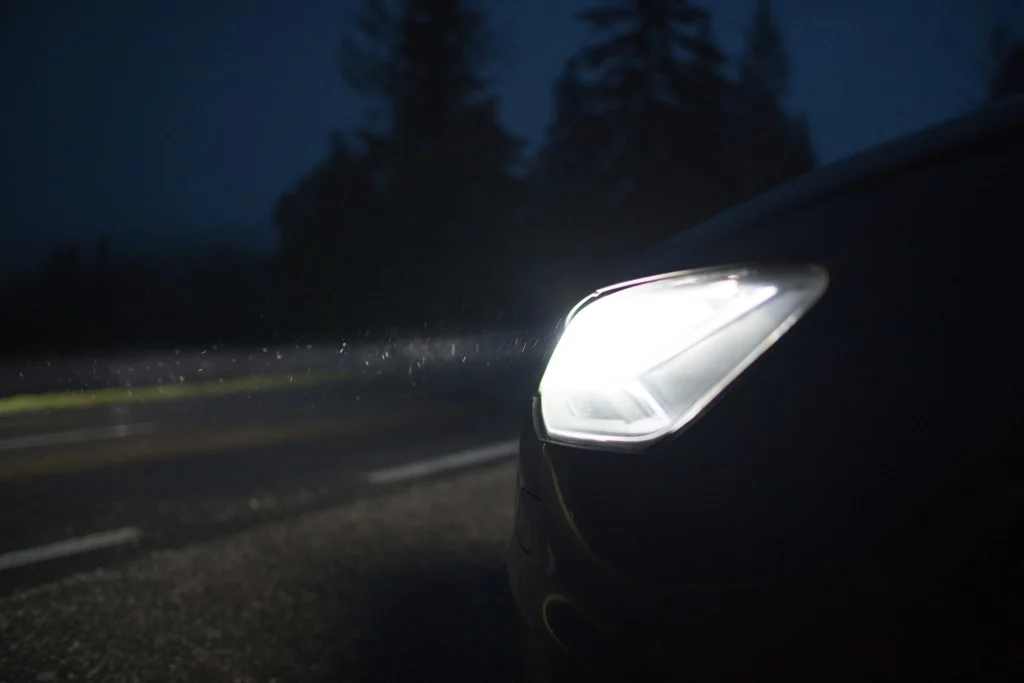Whether you want to improve the look or performance of your vehicle, you have endless possibilities for modifying your car. Some drivers install smoky headlight covers. While some people love the way they look, others hate their capabilities.
So should you use a smoky headlight cover on your vehicle? Let’s shine some light on these headlight covers to see if they’re worth the hype.
What Is a Smoky Headlight Cover?
Smoky headlight covers are dark plastic lenses that change the look and performance of the stock headlights on a vehicle. They achieve their unique look by absorbing light produced by the headlights. It effectively reduces the brightness of the headlights and creates a “smoky” look.
It’s typically a physical modification that drivers make to their vehicles to improve the aesthetics. You’ll often see them on cars that don’t need the full function of their lights, like race cars, as they drive on lit tracks when racing at night.
Should You Use a Smoky Headlight Cover?
As far as performance, smoked headlights have few benefits. Drivers who use these often do so to attain a specific look. Standard headlights produce a brighter light that gives the driver better visibility at night.
However, rules and regulations regarding smoky headlight covers vary from one location to the next. While there is nothing illegal about having these on your vehicle, using them on the road may be against the law.
If you plan to drive your vehicles on the road where smoked headlights are illegal, you’ll likely waste your time and money. These headlights are easy to spot, especially at night, and some areas take these violations very seriously.
We recommend checking with your local law enforcement to confirm the legalities of these headlight covers before making any modifications. If not, you could be out the money for the covers and possibly receive a citation.
Pro Tip: Headlights not shining as bright as they used to? Use these tips on How To Easily Clean Cloudy Headlights.

Do Smoky Headlights Reduce Visibility?
Smoky headlights can give a vehicle a darker or more intimidating look. However, when it comes to performance, these headlights reduce visibility substantially.
The darker the lenses, the more visibility gets reduced. Some of the darkest lenses can nearly black out the lights and drastically reduce visibility.
While other drivers may enjoy not feeling blinded by them or causing glare, you won’t see nearly as well when using them.
Reducing your visibility, especially when driving at night, can be extremely dangerous.
How Do You Clean Smoky Headlight Covers?
While some drivers purposefully install smoky headlight covers, that’s not the case for every vehicle. As headlight covers sit exposed to the elements, they can develop microscopic scratches, which cause them to appear smoky.
Cleaning them is simple, but it will take some elbow grease. The best way to clean smoky headlight covers is to use toothpaste and baking soda.
Start by cleaning the surface thoroughly and drying it with a towel. You can then cover each headlight cover with a toothpaste-baking soda mixture. Use a generous amount of paste when covering it.
You can remove the cleaner after letting the paste sit on the headlight covers for approximately five minutes. Use a soft-bristled brush to scrub away the paste.
For the best results, use a circular motion and avoid pressing so hard that you damage the plastic surfaces. The smokiness of the lights should begin to disappear as you remove the cleaner.
Pro Tip: Did you know headlights come in different colors? Find out Why Are Some Headlights Blue?

How Long Do Smoked Headlights Last?
The lifespan of smoked headlights depends on the quality of the films applied and where your car spends most of its time. Under ideal circumstances, smoked headlights will last five to 10 years.
On the other hand, Extended exposure to the sun or cheap lenses will drastically reduce the lifespan of the headlights. Drivers may only get three to five years if their vehicle spends most of its time outside, not stored in a garage.
Are Smoked Headlights Illegal in Texas?
The Lonestar State has strict laws regarding headlights, tail lamps, reflectors, or other lights. Using bulbs, tint, or installing aftermarket LED halo lights is illegal.
The Texas Department of Public Safety has an extensive section in its highway code for lighting. It states, “Any device that impairs the required effectiveness of headlamps, tail lamps, reflectors, etc., is prohibited. The lights, both front and rear, are made by the manufacturer to meet this safety standard. An alternate or additional material, particularly something dark, would impair its effectiveness.”
Thus smoky headlight covers, which darken and impair the brightness of the lights, would not pass. Other states have similar laws.
Are Smoky Headlight Covers Worth It?
Some drivers express themselves and their personalities through their vehicles. And smoky headlight covers may allow you to create a particular look for your car. However, they drastically reduce a driver’s ability to see at night.
If it is legal where you live and want to use smoky headlight covers, we recommend proceeding cautiously and avoiding going to extremes. Keep your safety in mind and ensure you can still see while driving at night after modifying your vehicle.
Discover the Best Free Camping Across the USA
To be honest with you, we hate paying for camping. There are so many free campsites in America (with complete privacy).
You should give it a try!
As a matter of fact, these free campsites are yours. Every time you pay federal taxes, you’re contributing to these lands.
Become a FREE CAMPING INSIDER and join the 100,000 campers that love to score the best site!
We’ll send you the 50 Best Free Campsites in the USA (one per state). Access the list by submitting your email below: